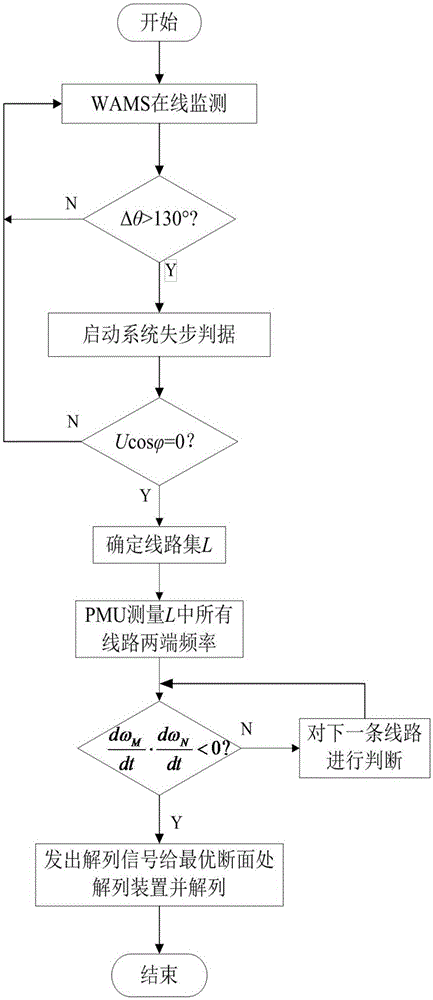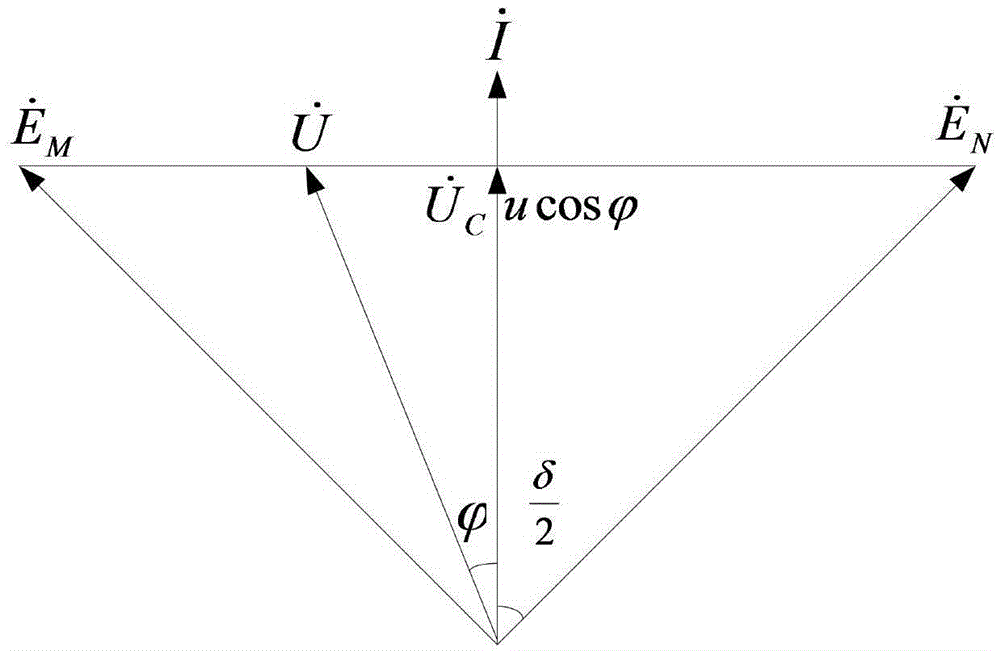Alternating current system multi-frequency oscillation composite out-of-step separation criterion method based on wide area measurement information
A wide-area measurement, multi-frequency oscillation technology, applied in the field of AC system multi-frequency oscillation compound out-of-step separation criterion, can solve the problems of inability to determine the specific position, lack of practicability, and wrong determination of the oscillation center.
- Summary
- Abstract
- Description
- Claims
- Application Information
AI Technical Summary
Problems solved by technology
Method used
Image
Examples
Embodiment Construction
[0030] The preferred embodiments will be described in detail below in conjunction with the accompanying drawings.
[0031] refer to figure 1 , a multi-frequency oscillation compound out-of-step separation criterion method for AC systems based on wide-area measurement information, the specific steps are as follows:
[0032] Step 1: Wide Area Measurement Information (WideAreaMeasurementSystem, WAMS) online monitoring system operating status, electrical quantities: voltage, power angle, phase angle, frequency can be collected through the PMU;
[0033]Step 2: The phase angle difference Δθ>130° of the busbar voltage on both sides is used as the start-up criterion of the unloading device. The power angle difference of a cluster can be approximately equivalent to the bus voltage phase angle difference Δθ on both sides of the line. Calculate whether the bus voltage phase angle difference on both sides of the splitting device satisfies Δθ>130°. If it is satisfied, it means that the sy...
PUM
 Login to View More
Login to View More Abstract
Description
Claims
Application Information
 Login to View More
Login to View More - R&D
- Intellectual Property
- Life Sciences
- Materials
- Tech Scout
- Unparalleled Data Quality
- Higher Quality Content
- 60% Fewer Hallucinations
Browse by: Latest US Patents, China's latest patents, Technical Efficacy Thesaurus, Application Domain, Technology Topic, Popular Technical Reports.
© 2025 PatSnap. All rights reserved.Legal|Privacy policy|Modern Slavery Act Transparency Statement|Sitemap|About US| Contact US: help@patsnap.com



